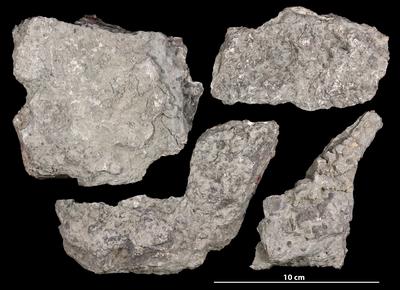Stratigraphy
Juuru Stage
ID | Number | Locality | Depth (m) | Stratigraphy | Collector | Date collected | Image | |||
|---|---|---|---|---|---|---|---|---|---|---|
From | To | |||||||||
| 208630 | UT24-34M | Reinu Quarry | 2.70 | 2.77 | Juuru Stage | Toom, Ursula | 2024-06-14 | |||
| 208629 | UT24-33M | Reinu Quarry | 2.37 | 2.57 | Juuru Stage | Toom, Ursula | 2024-06-14 | |||
| 208628 | UT24-32M | Reinu Quarry | 2.20 | 2.37 | Juuru Stage | Toom, Ursula | 2024-06-14 | |||
| 208627 | UT24-31M | Reinu Quarry | 2.07 | 2.20 | Juuru Stage | Toom, Ursula | 2024-06-14 | |||
| 208626 | UT24-30M | Reinu Quarry | 2.02 | 2.07 | Juuru Stage | Toom, Ursula | 2024-06-14 | |||
| 208625 | UT24-29M | Reinu Quarry | 1.95 | 1.98 | Juuru Stage | Toom, Ursula | 2024-06-14 | |||
| 208624 | UT24-28AM | Reinu Quarry | 1.93 | 1.97 | Juuru Stage | Toom, Ursula | 2024-06-14 | |||
| 208623 | UT24-28M | Reinu Quarry | 1.93 | 1.95 | Juuru Stage | Toom, Ursula | 2024-06-14 | |||
| 208622 | UT24-27M | Reinu Quarry | 1.86 | 1.93 | Juuru Stage | Toom, Ursula | 2024-06-14 | |||
| 208621 | UT24-26M | Reinu Quarry | 1.83 | 1.86 | Juuru Stage | Toom, Ursula | 2024-06-14 | |||
| 208620 | UT24-25M | Reinu Quarry | 1.75 | 1.83 | Juuru Stage | Toom, Ursula | 2024-06-14 | |||
| 208619 | UT24-24M | Reinu Quarry | 1.70 | 1.75 | Juuru Stage | Toom, Ursula | 2024-06-14 | |||
| 208618 | UT24-23M | Reinu Quarry | 1.60 | 1.70 | Juuru Stage | Toom, Ursula | 2024-06-14 | |||
| 208617 | UT24-22M | Reinu Quarry | 1.48 | 1.54 | Juuru Stage | Toom, Ursula | 2024-06-14 | |||
| 208616 | UT24-21M | Reinu Quarry | 1.26 | 1.38 | Juuru Stage | Toom, Ursula | 2024-06-14 | |||
| 208615 | UT24-20M | Reinu Quarry | 1.26 | 1.29 | Juuru Stage | Toom, Ursula | 2024-06-14 | |||
| 208614 | UT24-19M | Reinu Quarry | 1.10 | 1.16 | Juuru Stage | Toom, Ursula | 2024-06-14 | |||
| 208613 | UT24-18M | Reinu Quarry | 1.00 | 1.10 | Juuru Stage | Toom, Ursula | 2024-06-14 | |||
| 208312 | 208312 | Viljandi 91 borehole | 275.70 | Juuru Stage | Kiipli, Tarmo | |||||
| 208311 | 208311 | Viljandi 91 borehole | 274.60 | Juuru Stage | Kiipli, Tarmo | |||||
| 208310 | 208310 | Viljandi 91 borehole | 272.60 | Juuru Stage | Kiipli, Tarmo | |||||
| 208309 | 208309 | Viljandi 91 borehole | 270.60 | Juuru Stage | Kiipli, Tarmo | |||||
| 208218 | UT24-70 | Reinu Quarry | 0.87 | 0.93 | Juuru Stage | Toom, Ursula | 2024-10-03 |  | ||
| 208217 | UT24-69 | Reinu Quarry | 0.82 | 0.87 | Juuru Stage | Toom, Ursula | 2024-10-03 |  +3 +3 | ||
| 208216 | UT24-68 | Reinu Quarry | 0.78 | 0.82 | Juuru Stage | Toom, Ursula | 2024-10-03 |  +5 +5 | ||
Browse Geocollections
This site uses Matomo to analyze traffic and help us to improve your user experience. We process your IP address, viewed pages, load times and device information. This data is only processed by us.


